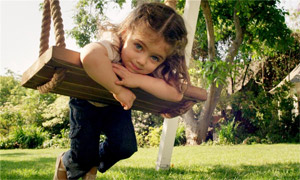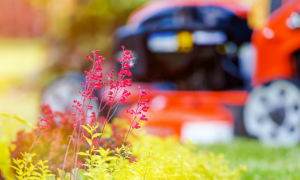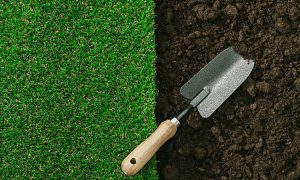Guest post by Bryce Leghorn
With all of the available products and techniques available, it can be hard to know where to start when it comes to fertilizing and mulching. Fertilizing infuses vital nutrients to the lawn while mulching adds essential natural elements back to the soil. Check out the following guide to fertilizing and mulching, and learn the important techniques to cultivate an upstanding yard.
Fertilizing the Yard
There are two main kinds of fertilizer that you can add to your lawn: quick and slow release. The decision to use quick or slow release fertilizer depends on your location, budget and the amount of time you want to dedicate to growing your lawn.
Quick-Release
Quick-release fertilizers are water soluble and are immediately available to the grass once water is added. Quick-release is usually applied in liquid or in granular varieties. The downside to quick-release is that they only last 2 to 4 weeks and need to be reapplied. Homeowners can also put too much on at one time and burn their lawn.
Add quick-release fertilizers to your lawn throughout the growing season. Liquid forms need to be connected to a hose to dilute the concentration enough while spreading over the lawn. Follow package instructions closely while spraying a quick-release fertilizer in order to have enough for the size of your lawn and to prevent burning the lawn by spraying too much on one area.
Slow-Release
Slow-release fertilizers are great for those who want to do fewer applications each year. The gradual release of the nutrients will allow grass to soak up the energy slowly and lawns will grow more steadily over 6 to 8 weeks. This kind of fertilizer comes in pellet form which allows it to slowly dissolve over time. The downside to slow-release fertilizers is that the nutrients aren’t immediately available to the grass and can take time to make a difference in overall. They are usually more expensive than quick-release formulas and don’t do as well in colder soils.
Slow-release fertilizers usually require a spreader to adequately apply them to a lawn. A small spreader can be handheld and larger versions can be rolled around the lawn in cart form. Slow-release formulas are great to add to the lawn in early spring and late summer to provide nutrients to the grass all year long. To ensure the release of nutrients is activated, spray down the lawn immediately after applying the fertilizer, To prevent run off, refrain from applying slow-release fertilizers right before a rainstorm.
Mulching the Yard
Grass Clippings
One popular choice is to use grass clippings from mowing. Homeowners who choose this option simply do not bag their clippings during a mow and allow them to fall back onto the grass. Lawn clippings get broken down by insects and microbes and release nitrogen back into the soil. It is also the cheapest way to add nutrients to the lawn.
Shredded Leaves
Shredded leaves also provide organic mulch that is great to use in the lawn. Homeowners will need a mulch mower n order to shred the fallen leaves finely enough. The mulch mower shreds the leaves into a bag and then you can easily spread the shredded leaves directly onto the lawn in a layer that is ½ inch or less in height. This is a great option for those who are always raking dead leaves in the fall.
Peat Moss
Sphagnum peat moss is mulch that can be easily distributed on lawns by the handful. Peat moss does need to be raked into the grass but it doesn’t need to be mixed into the soil. Sphagnum peat moss is available at local garden centers and should be applied in the spring.
It is highly recommended that homeowners use both fertilizer and mulch in order to keep lawns strong and healthy all year long. Consider the type that works for you. Be sure to include both of these important lawn care applications in your yearly lawn maintenance in order to provide nutrients back into the soil.
Bryce Leghorn is the one stop, go to guide for all of his friends and families’ gardening questions. He loves learning about new technologies and then testing them next to his tried and true traditions. When he isn’t in his garden he is busy white water rafting and camping off-grid.






